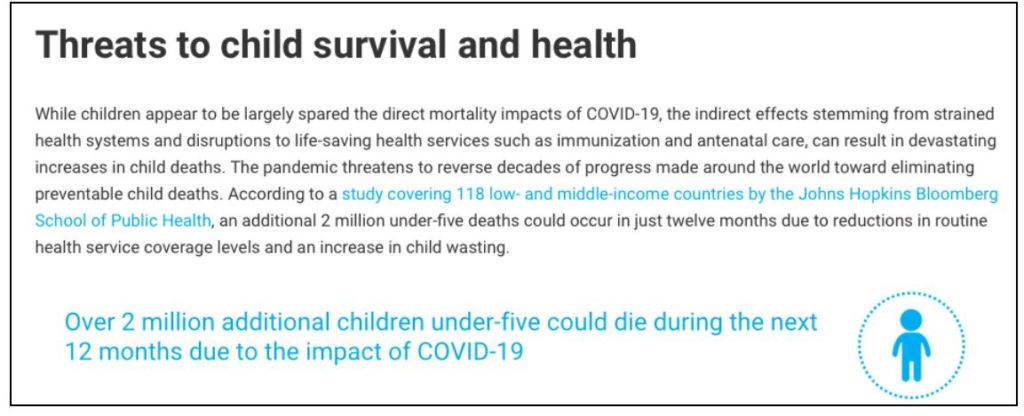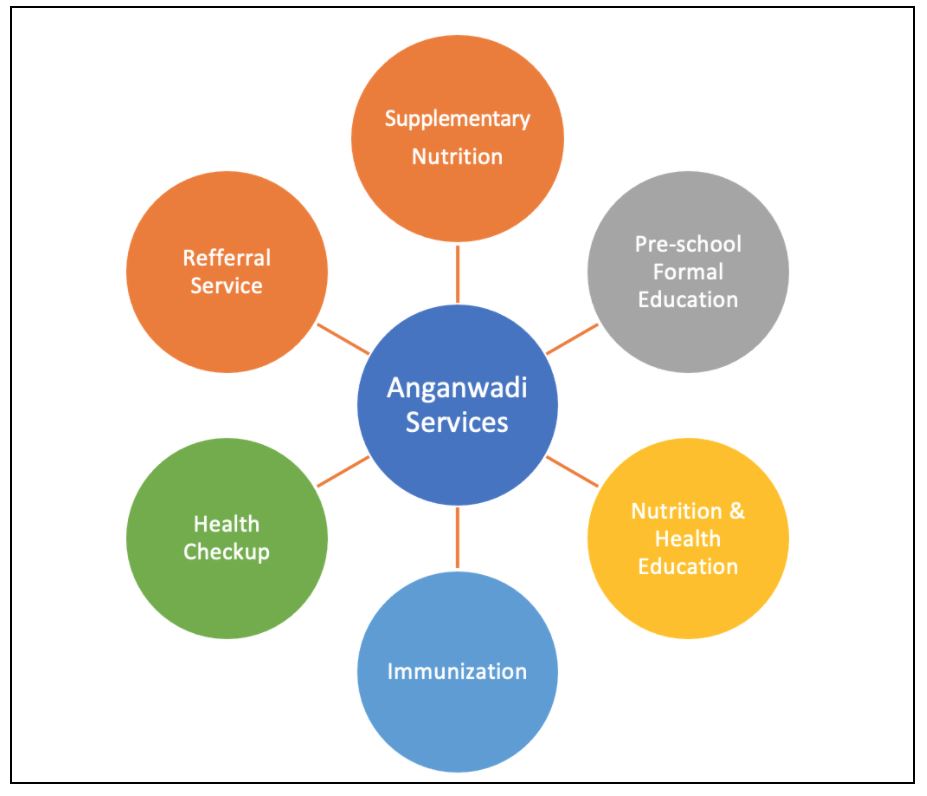Anganwadi Services under the umbrella ‘Integrated Child Development Services (ICDS)’ are aimed at holistic development of children below 6 years of age. They are critical for improvement in many women & child-related indicators. Data shows that the number of beneficiaries of Anganwadi services decreased by more than 14% between 2016 & 2019 despite an increase in the allocation of funds.
On 13 January 2021, in a Public Interest Litigation (PIL), the Supreme Court directed the re-opening of Anganwadi Centres that are outside the containment zones which were earlier closed due to the pandemic. We covered this judgement along with the backdrop in detail in an earlier review of Court judgments.
The COVID-19 pandemic had an adverse effect on various population groups, especially among the marginalised communities due to the loss of employment opportunities, which in turn has restricted their access to basic resources for survival. As per UNICEF, it is estimated that the impact of COVID-19 could result in an additional 2 million deaths of under-five children globally.

UNICEF had earlier estimated that around 370 million children may miss out on nutritious school meals due to COVID-19 pandemic-induced disruptions. This highlights the importance of schemes that provide nutritious food for children.
Anganwadi Services aim at holistic development of Child
Anganwadi Services under the umbrella ‘Integrated Child Development Services (ICDS)’ is one such scheme that is aimed at the holistic development of children below 6 years of age. Apart from providing the much-required nutrition to the child, the scheme also focuses on the education component of the children along with the nutrition of pregnant women & lactating mothers which have an impact on the child. The Anganwadi Services under the ICDS scheme is a Centrally sponsored scheme and provides six services.

As part of our series of stories on ‘Transfer of Central funds to the States’, we take a look at allocation funds allocated to the states under Anganwadi Services (ICDS).

Increase in overall fund allocation to States despite a fall in the number of beneficiaries
As per the information that was availed through RTI, a total of Rs. 15.06 thousand crores were transferred to the states during the year 2017-18 under this scheme. In the following two years, the amount transferred to the states has slightly increased. At the same time, as per the information provided by the Ministry of Women & Child Development (MWCD), there is a year-on-year fall in the number of beneficiaries under the scheme. The increase in funds transferred to the states could be due to the revised cost norms approved in 2017.
The number of beneficiaries of ‘Supplementary Nutrition’ in the year 2017 was 9.82 crores, which fell to 8.91 crores in 2018 and to 8.74 crores in 2019. In 2020, the total number of beneficiaries receiving supplementary nutrition is 8.63 crores as of August 2020. Between 2016 & 2019, the number of beneficiaries fell by more than 14%. The number of total beneficiaries is excluding the ‘Union Territories (UTs)’ with the exception of Delhi & Puducherry. It has to be noted that the data from the Finance ministry is for the financial year, whereas the beneficiaries’ information provided by MWCD is for a calendar year.
The beneficiaries of supplementary nutrition include – Children under 6 years, lactating mothers & pregnant women.
Uttar Pradesh, West Bengal, Bihar, AP & Assam among the states that have seen increased fund transfer
In terms of volume, the highest allocation of funds under the Anganwadi Scheme is received by Uttar Pradesh (UP), on account of the greatest number of beneficiaries in the state. During the three financial years that are being analysed i.e., 2017-2020, the amount transferred to U.P has increased from Rs. 2.15 thousand crores in 2017-18 to Rs. 2.36 thousand crores in 2019-20.
The higher volume can be attributed to the higher number of beneficiaries in line with its standing as the largest populated state in the country. The number of beneficiaries in UP as of 2019 was 1.59 crores. In fact, UP retains its position as the state with the greatest number of beneficiaries despite a fall in the number of beneficiaries. During 2017, there were a total of 2.02 crores beneficiaries in UP.
- Among the larger states, a similar trend can be observed in the case of West Bengal, Bihar, A.P, Assam, etc. These states are among the top half in terms of the volume of funds received from the centre as well as the number of beneficiaries.
- The growth in allocation and fall in beneficiaries is stark in the case of Bihar. In 2017-18, the amount transferred to Bihar is Rs. 922.17 crores which increased to Rs. 1.27 thousand crores in 2019-20. However, the number of beneficiaries dropped from 1.15 crores in 2017 to around 73 lakhs in 2019.
There are other states where this trend is exactly the opposite i.e., a fall in the allocation of funds to the states, while there is an increase in the number of beneficiaries.
- The funds allocated by Centre to Chhattisgarh have reduced from Rs. 567.62 crores in 2017-18 to Rs. 483.39 crores in 2019-20. However, the number of beneficiaries has increased from 24.17 lakhs to 27.09 lakhs between 2017 and 2020.
- Rajasthan & Odisha have also witnessed a fall in the volume of funds allocated to the states, despite no significant reduction in the number of beneficiaries.
- Kerala did not have a major change in the volume of the funds received during this period, despite a higher increase in the number of beneficiaries.
There are huge variances between the states both in terms of the volume of the funds received as well as the number of beneficiaries. Hence, the average amount received per beneficiary in the state is a better metric to compare the states over the years.
- Most of the North-eastern states receive a higher average amount of funds per beneficiary under the ICDS scheme.
- Among the comparatively larger states, Kerala received among the highest average funds per beneficiary in 2019-20, despite a reduction compared to 2017-18.
- The paradoxical trend observed in Bihar of increase in funds despite a drop in the number of beneficiaries is reflected in the average funds per beneficiary, which more than doubled from Rs. 798 in 2017-18 to Rs. 1734 in 2018-19.
Many states still behind the curve despite increased fund allocation
In an earlier story based on NFHS-5 (National Family Health Survey), it is observed that Bihar, Assam, and Gujarat are among the states which do not perform well on various indices like – Neo-natal mortality rate, child mortality rate, stunted growth, underweight, etc. All these have a direct correlation to the various services extended by Anganwadis under the ICDS scheme.
Meanwhile, states like Kerala, Telangana, North-easters states performed comparatively better.
The average per beneficiary funds received by these states shows that states with a higher average tend to perform better compared to those with a lower average per beneficiary funds.
In this context, the increase in the funds for states like Assam, Bihar, West Bengal, etc. is a step in the right direction. However, the fall in the beneficiary numbers is also a concern along with the fall in the quantum of funds received by a few of the states despite no-change or increase in the beneficiaries. These have to be analysed in detail to understand the correlation between the fund allocation & progress on the ground.
Featured Image: Beneficiaries of Anganwadi Services


